- Best Smite Gods For Beginners - February 10, 2023
- Smite x Runescape Crossover - December 26, 2022
- Overwatch 2 Review - October 27, 2022
SMITE is currently one of the many free-to-play MOBA (multiplayer online battle arena) games available right now. With a wide range of gods across various mythologies (Greek, Norse, and Chinese, to name a few), it truly lives up to its name as “Battleground of the Gods.”
If you’re wondering whether or not you should give SMITE a try, it is a resounding yes from me. Frankly speaking, the epic mythologies were enough to hook me straight out of the gate. But, I’ve also always been a competitive MOBA player, so as you can imagine, I leaped at the chance to play SMITE as soon as possible, and I was not disappointed.
The gameplay is remarkably fluid and feels great (you can literally fly across the map on some gods, like Apollo, who can hop on his sun chariot and go where he pleases). Over the years, the developers have only made the game look even better.
Anyway, SMITE is truly a unique game within its genre. In this overview, I will be going over what differentiates it from other big names on the MOBA scene (League of Legends, DOTA, etc.), what makes it such a dynamic and entertaining game that has kept me hooked to this day, as well as some basic info for new players. Having played this game since its release, I hope I can answer all your main questions here and convince you to play.
Key Info Up Front
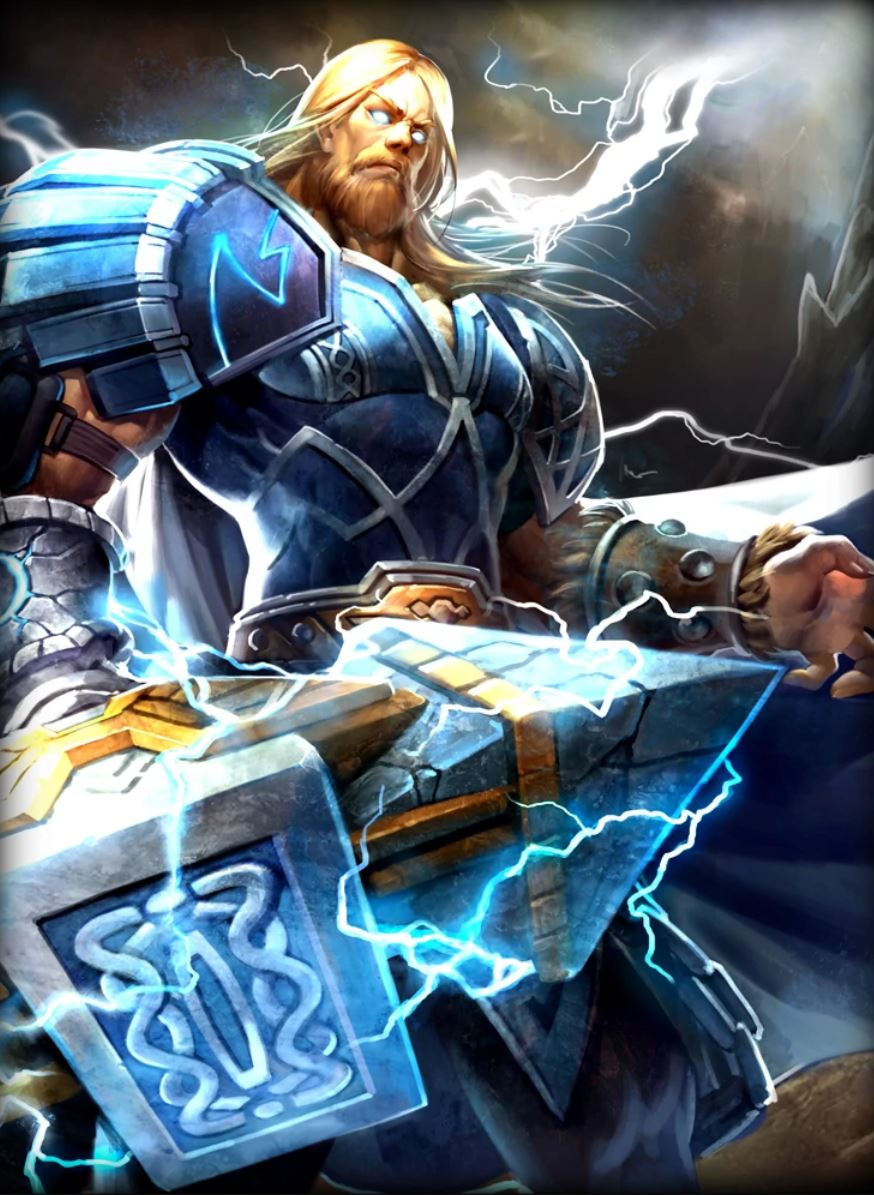
Unlike most MOBAs, which are typically played from a top-down perspective, SMITE is played from a third-person perspective. However, it shares much in common with them, as its main game mode (Conquest) is a five versus five, three-lane map with a jungle.
The main goal is the take down the enemy team’s Titan (it fights back), which would be the equivalent of League of Legends’ Nexus. Also, note that there are two excellent features for new players: auto-skill (levels up your god’s skills for you) and auto-buy (buys items from the gold shop for you) in case either of these aspects of the game is too overwhelming at the start.
This helped me out a lot in the beginning; coming to SMITE from League of Legends, seeing a wholly new item shop was difficult to adjust to. Still, after adjusting to the game, it became easier to buy the items myself.
SMITE’s History
Developed by Titan Forge Games and published by Hi-Rez Studios, SMITE was first brought to the PC in 2012 for a closed beta.
It was made an open beta in 2013 and was finally released to the public in 2014. Later, it was released for the Xbox One in 2015, the PlayStation 4 in 2016, and Nintendo Switch in 2019. And yes, it is cross-platform so that you can play with your friends no matter what.
Hi-Rez Studios came up with the idea for SMITE after playing around with their previous game, Global Agenda, released in 2010. At this point, the MOBA genre was gaining a great deal of traction in the gaming community, so they decided to give it a try.
Originally, they wanted to make a MOBA using Global Agenda’s assets. Still, a few years later, they pivoted away from this and took the route of mythological gods. From this, SMITE was born. Here’s a short video about the initial conception of the game with developer insight.
General Info on SMITE
There is a lot of ground to cover here, so that I won’t be going into too much detail. I will be hitting all the important points and hopefully answer any initial questions you may have as a prospective or new player of this game.
SMITE’s Classes
Before even getting into the main game mode of SMITE, it pays to glance at the five main classes.
- Mage: this is your spell-slinger class whose primary damage output comes from their abilities. However, some mages can be considered “on-hit” mages who deal most of their damage with empowered auto-attacks. Usually, they are ranged characters, but they use magical power as their main source of damage.
- Hunter: this is your ranged attack damage dealer, usually reliant on auto-attacks for their main source of damage. Some hunters are more ability-focused than others, but what differentiates them from mages is that they use physical power, not magical power.
- Assassin: these guys can either use AD or AP depending on which god you’re playing and are typically melee. Their main purpose is to assassinate the enemy back-liners (mages and hunters) with their burst damage.
- Warrior: arguably the most well-rounded class, warriors are durable, meaning they can take quite a bit of punishment, all the while having the capability of dishing out just as much damage. This class is very diverse, as different warriors can fill different roles.
- Guardian: your go-to front-liner, the guardian class is meant to soak up damage, protect their back-liners, and lockdown enemy gods to make it easier for your team to kill them. Most guardians are loaded with abilities that are meant to stun, slow, or root an enemy without dealing that much damage.
I can, hands down, say that mages are my favorite of all the classes. I wish I could say there are practical reasons for this, but truth be told, I think mages have the flashiest abilities and some of the best play-making ultimates.
This isn’t to say that there aren’t gods from other classes that have flashy abilities or play-making ultimates or that I dislike any of them; quite the contrary. I play them all and love them all. There are certainly non-mage gods that can single-handedly change the course of a team fight in your favor and look good while doing it (especially guardians).
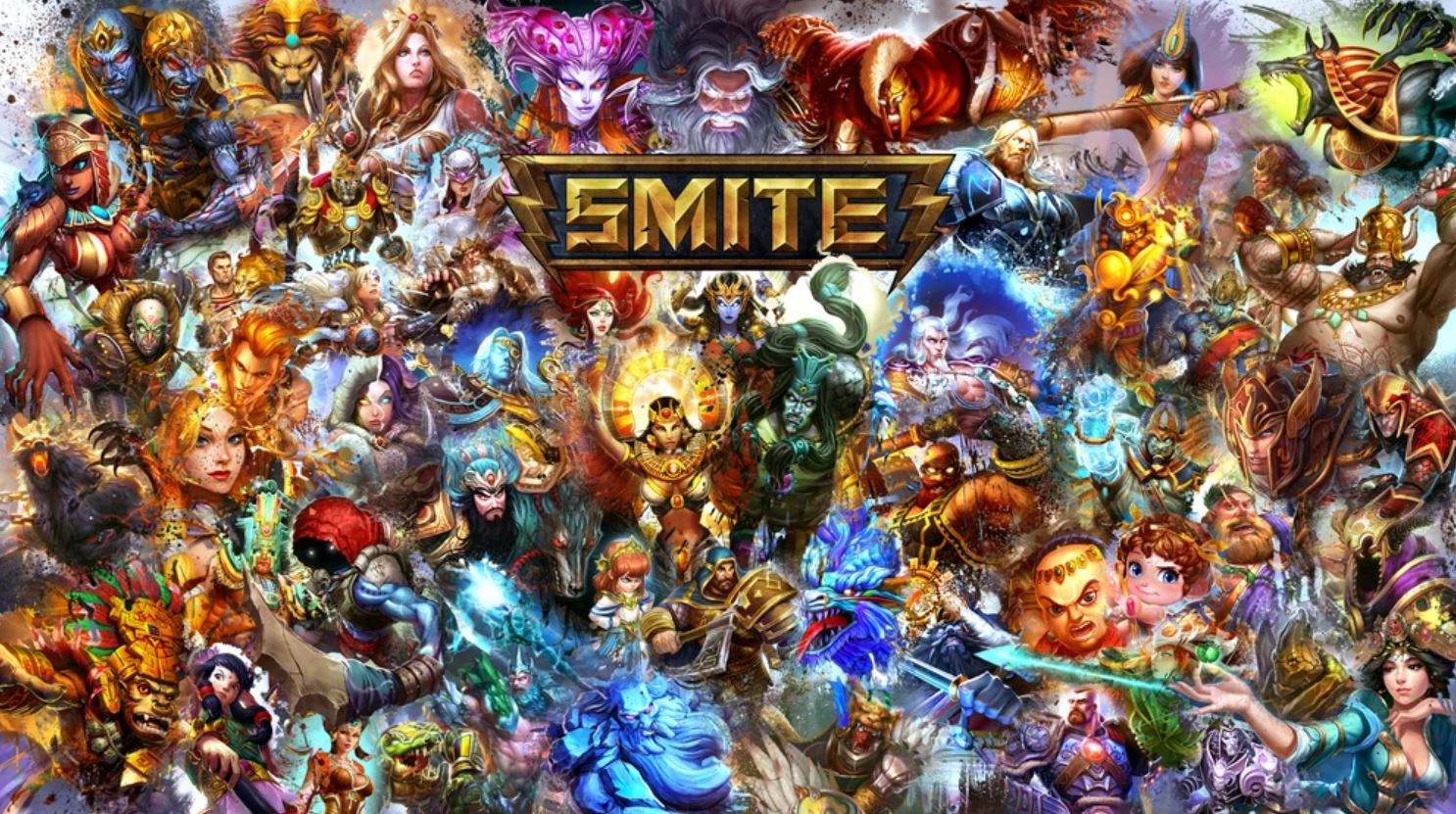
Buff Camps
While there are jungle camps that simply give experience upon killing, there are also special kinds of jungle camps that give special buffs. Some of these buffs are specific to certain game modes, which will be mentioned in the list below.
- Damage camp: this buff is red and provides its wielder with extra damage (both physical and magical power). Typically taken by the Mid Laner in Conquest.
- Mana camp: this buff is blue and provides its wielder with extra mana generation and 10% cooldown reduction. Typically taken by mages, the Solo Laner usually takes it in Conquest.
- Speed camp: this buff is yellow and provides its wielder extra movement speed. Typically taken by the Jungler in Conquest.
- Void camp (specific to Conquest): this buff is dark purple and reduces the protections of enemy gods nearby. Typically taken by the ADC in Conquest.
- Support camp (specific to Conquest): this buff is green. It prevents the buffs of nearby allied gods from expiring and gives its wielder some extra health and mana. As the name implies, this is typically taken by the Support in Conquest.
- Attack speed camp (specific to Arena): this buff is light purple and provides its wielder with extra attack speed. Typically taken by hunters.
- Boss camp: there is a boss camp in Conquest (Fire Giant), Slash (Apophis), and Joust (Demon King), and each of these gives a different team-wide buff. Boss camp buffs are the most powerful buffs in the game.
Except for the boss camp buff, which is automatically given to all your currently-living teammates when the boss is defeated, all other buff camps drop their buff on the ground (in the form of an orb) and need to be picked up. I stopped tracking how many times someone on my team has taken my buff, either by accident or on purpose, so be aware of your positioning when helping a teammate kill a buff camp.
Also, each god can only have one buff active at a time. You can’t have both damage and mana buff on you (or any other combination) simultaneously. The only exception to this is, once again, boss camp buffs; for as long as you’re alive when your team slays the boss, you get the buff, even if you have a regular buff active already.
Conquest Game Mode
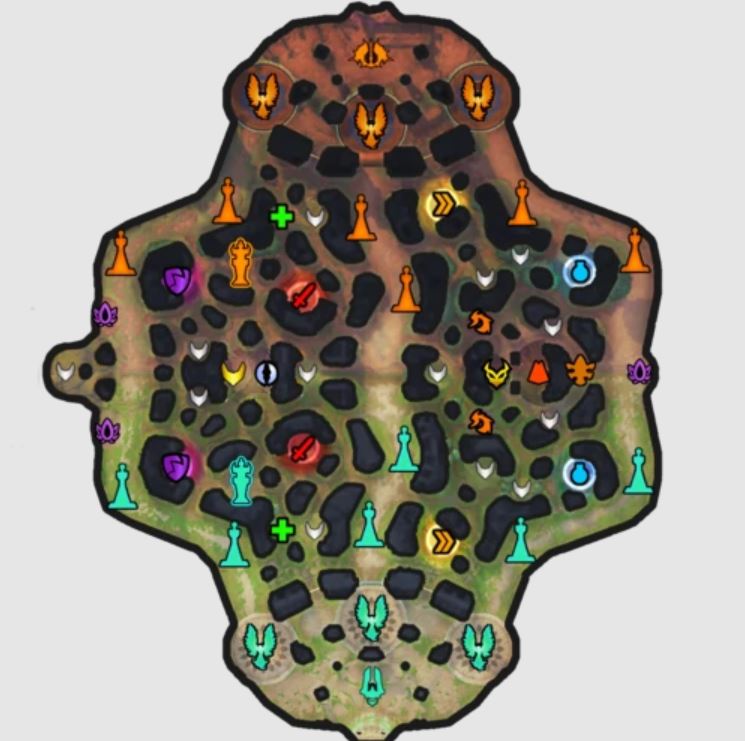
As mentioned before, SMITE’s main game mode is Conquest, which is your classic five versus five, three-lane map with a jungle. The objective is to slay the opposing team’s Titan, but getting to said Titan is no simple thing. Each team has three phoenixes (one in each lane), and these are the closest structure to the Titan.
Once a phoenix is destroyed, your minions in that lane become empowered until the phoenix heals itself and respawns. Each team also has a total of six towers (two in each lane), and once a tower is destroyed, it is destroyed permanently; unlike the phoenix, it cannot respawn.
Lastly, minions spawn in each lane every thirty seconds and continue running down their lane until they meet an enemy, which they promptly begin attacking. Killing them provides experience and gold for your god.
For those of you with MOBA experience, it is important to note here that, while the mid lane is the same mid lane as other MOBAs, there is no top lane or bottom lane; rather, there is a right lane and a left lane. With that said, let’s look at the game’s standard five roles:
Solo Laner
This player lanes by themselves, either in the right lane or left lane, depending on which side of the map your team is on. An easy way to remember which side of the map you’re on as a Solo Laner is by checking which side the blue buffs spawn on (denoted on the main mini-map by a tiny blue vial.
In the picture above, it is on the right side, meaning, if you’re the Solo Laner in this situation, you’d be going right). A god of the warrior class usually fills this role. However, there are certain exceptions to this, as some of the more durable mages or damage-dealing guardians can be Solo Laners as well. Sometimes people even take hunters into the solo lane, but I wouldn’t recommend it.
Mid Laner
This player lanes in the mid lane. A god of the mage class usually fills this role; however, there are, of course, exceptions to this. Sometimes an assassin can be taken here, or even a warrior, but if you want to play a mage in Conquest, then your safest bet is to queue up as a Mid Laner.
ADC (attack damage carry)
This player is one of two players in the duo lane (opposite lane of the Solo Laner). A god of the hunter class fills this role. I would say that this role has the least variance compared to the others, as I’ve only ever really seen hunters fill it. Still, you could take a mage here, too, if your team needs more magical power.
Support
This player is the second player in the duo lane and is largely accepted as the ADC’s babysitter. This role is filled either by a god of the guardian or mage class. Now, I know what you’re thinking, but before you ask, “how can a mage be a support?” let me explain.
There is a subclass within mage known as the enchanter. They are ability-focused like all other mages, but the difference is that their abilities are more geared toward supporting their teammates rather than killing their enemy. For example, one of the staple mage supports in SMITE is Aphrodite.
Her ultimate ability makes both her and an ally (of her choosing) invulnerable for a short period of time. This is quite different from your standard mage like Poseidon, whose ultimate is a giant Kraken that deals massive damage and has the potential to one-shot a squishy god.
Jungle
This player doesn’t have a lane but rather gains experience by killing the neutral monster in the jungle and helps their teammates out by ganking lanes. This is a slight oversimplification, for the Jungler truly has a lot of jobs and is by far the most difficult role to play for a new player, as it requires the most game sense and knowledge. So, be sure to get a feel for the game before taking a shot at being a Jungler.
Being primarily a mage player, I’m usually the Mid Laner. Still, my off roles are Support and Solo Laner, so I can—you guessed it—play a mage. If my team needs a front-liner, I will swallow my pride and play a warrior or guardian, but my favorite role will always be mid in SMITE.
All in all, Conquest is the most “hardcore” game mode in SMITE, as it requires the most knowledge and teamwork to play well. If you’re coming into SMITE from another MOBA, it will naturally be easier for you to step right into Conquest, though I still wouldn’t recommend it.
As I mentioned, I have plenty of MOBA experience from League of Legends prior to playing SMITE. Consequently, I thought I could just hop into Conquest, but boy was I wrong. I felt very out of place due to how different the flow of the game was.
That being said, if you’re a new player to the MOBA genre, then definitely don’t start with Conquest; it may be wiser to dabble in SMITE’s other game modes first, which we shall look at next.
Arena Game Mode
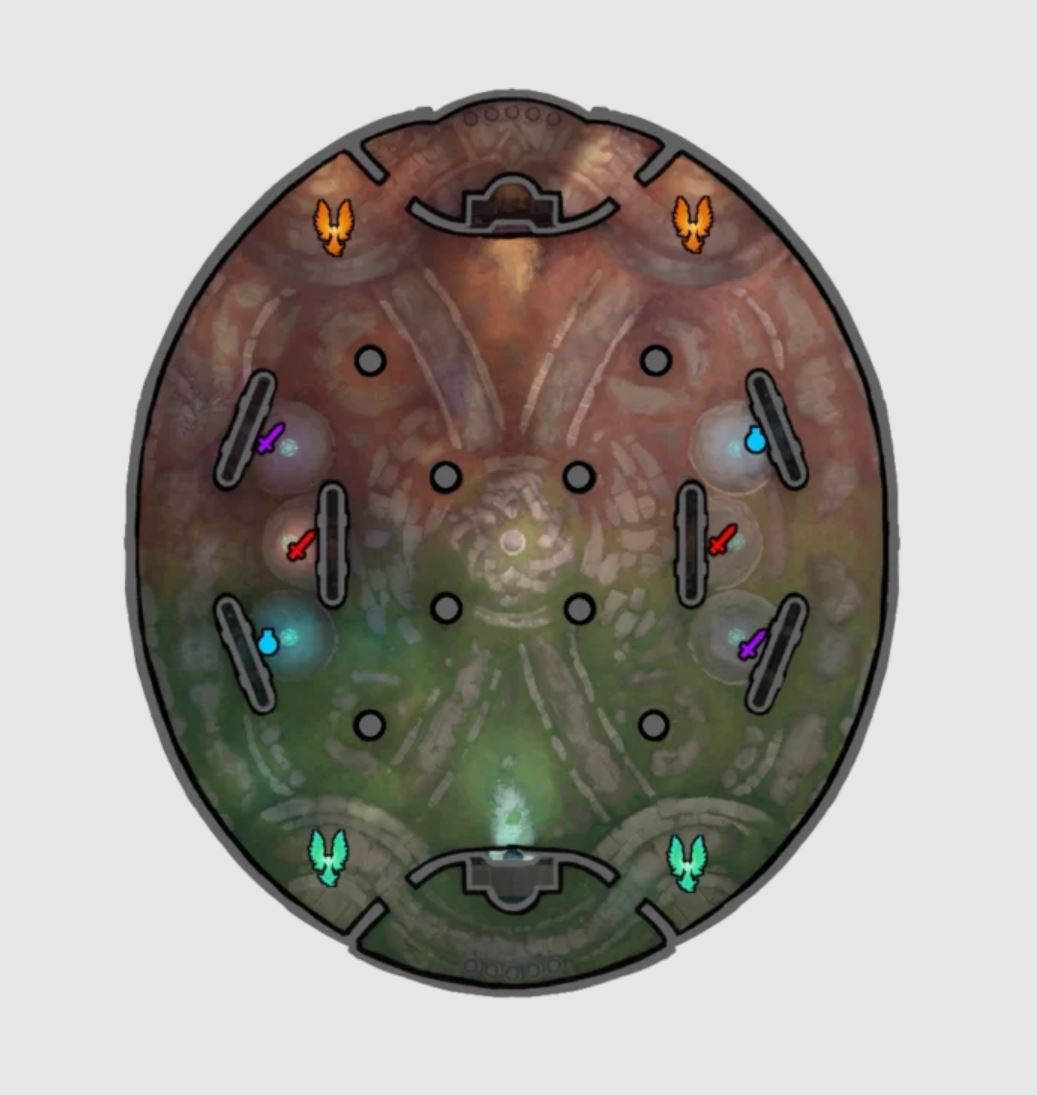
Arena may very well be the most casual game mode in SMITE, so this is definitely a great place to start. Here are a couple of key points:
- Five gods are pitted against five gods.
- There are no lanes, Titans, phoenixes, or towers here; it’s just a deathmatch in a decently sized arena. This means you can pick whatever god you want and just have fun, though it is considered nice to try and balance your team out with your pick and not choose a class that one of your teammates has already chosen.
- There is a total of six buff camps, three on the right side and three on the left side. The typical etiquette here is for each team to go to the three buff camps to their left, kill them, and then go to the middle and begin fighting. However, there is sometimes that one guy who ruins this etiquette and causes some havoc, so keep a lookout!
- Each team has a large portal at the front of their bases that all minions naturally move toward. While this portal is the end-point for all minions that don’t die en route to it, no minions spawn from this portal; instead, there are two side gates in each team’s base that spawns minions every 30 seconds or so.
Each team starts with 500 tickets, and the main objective is to deplete the enemy’s ticket count to zero. Here are the ways you can deduct tickets from your opponents:
- Last hit minions. Each one you last hit deducts one ticket.
- Escort minions into the enemy’s portal. Each minion escorted deducts one ticket.
- Kill gods. Each god slain deducts five tickets.
- Escort a minotaur (he’s a big minion) into the enemy’s portal. This deducts 15 tickets. A minotaur is spawned every time one team kills 10 enemy gods.
To sum this section up, Arena is the place to start. I was pleasantly surprised by this game mode after failing in Conquest. There is purity in its simplicity. Kill minions, kill gods. That’s it.
Joust Game Mode
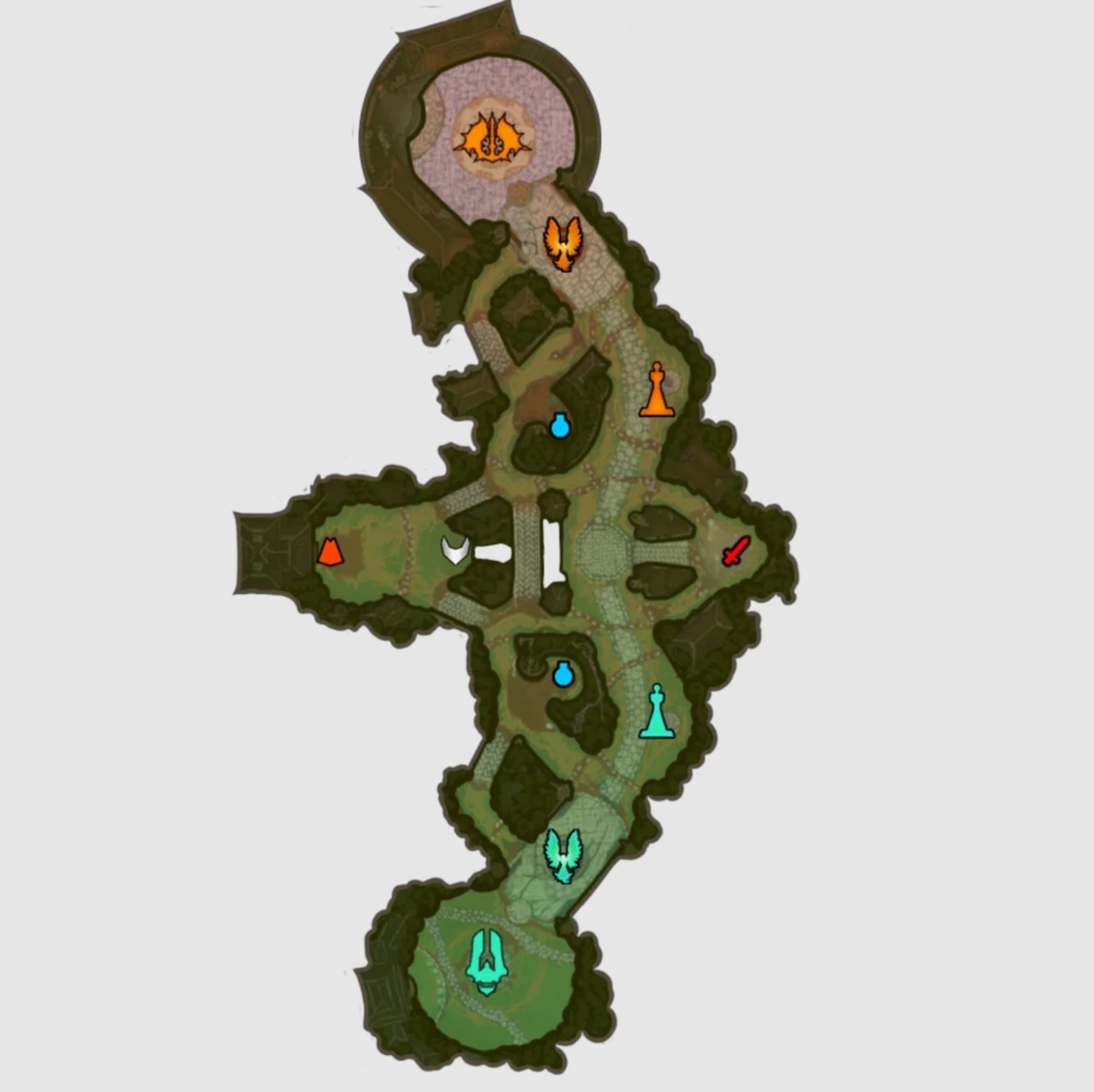
Joust is SMITE’s three versus three game mode with only one lane. While there are no defined roles as there are in Conquest, it is still respectful to try and work with your teammates when picking your class and god. For example, if all of you pick mages, you’ll have no front line, making you easy pickings for an enemy assassin or warrior who can simply jump on you on a whim.
Each team has only one tower and one phoenix protecting their Titan, making defending them all the more important. While the number of jungle camps in this map has varied over its multiple iterations, a few have remained constant: the two mana camps (currently, one on either side of the map), the damage camp at a central location of the map for the teams to fight over (denoted on the mini-map by a red sword), and the boss camp: the Demon King.
Upon slaying the Demon King, your entire team receives a nice buff, and the foremost enemy structure (tower or phoenix) is disabled for the duration of your buff, making sieging it much easier.
Slash Game Mode
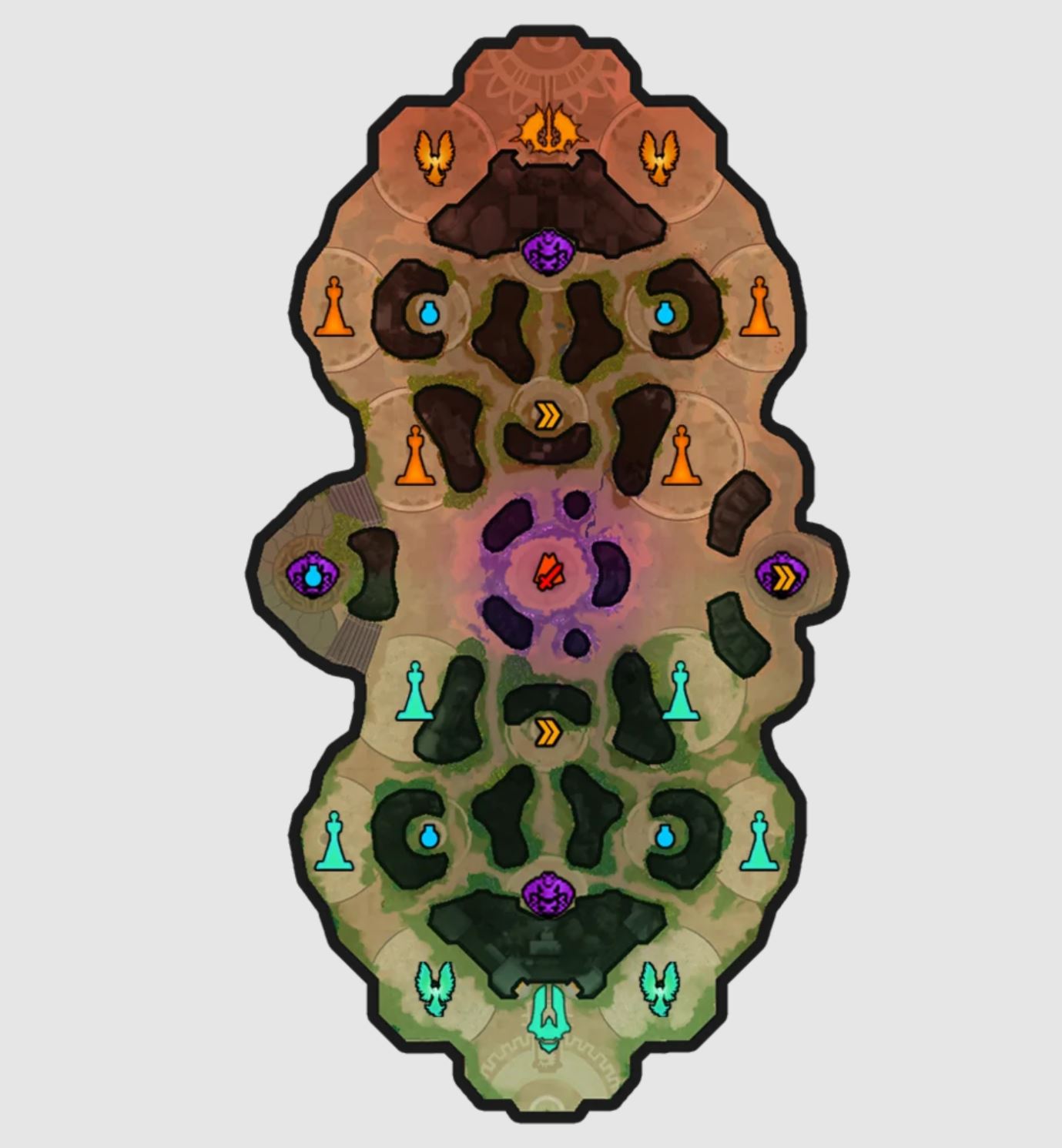
Slash is the newest standard game mode in SMITE (it was added in January 2022) and is another five versus five map with Titans, phoenixes, and towers. But, unlike Conquest, Slash only has two lanes (meaning your team has a total of two phoenixes and four towers).
There are jungle camps that give buffs as well, the damage camp spawning at the center of the map. However, at the 10-minute mark, this damage camp becomes Apophis (the boss camp), who gives a team-wide buff upon slaying.
That said, there are no defined roles/positions here, but picking a decent team composition is still ideal (in other words, don’t pick five assassins. It doesn’t work, trust me).
The unique feature of this game mode is the juggernaut. Their spawn locations are denoted by dark purple cobra heads on the map. Upon killing one, a juggernaut unit will spawn for your team and push a lane, fighting for you like your regular minions.
These guys have large health pools and can help your team out with sieging structures (towers, phoenixes Titans). Plus, as long as you have a juggernaut active, a portal spawns right in front of your allied Titan that you can step through to get teleported directly to your juggernaut.
Fun fact: Slash is the combination of two former game modes, Siege and Clash. Both of these game modes were two-lane, five versus five maps with jungle camps. While Siege had the juggernaut mechanic, Clash had the central boss camp, Apophis.
Assault Game Mode
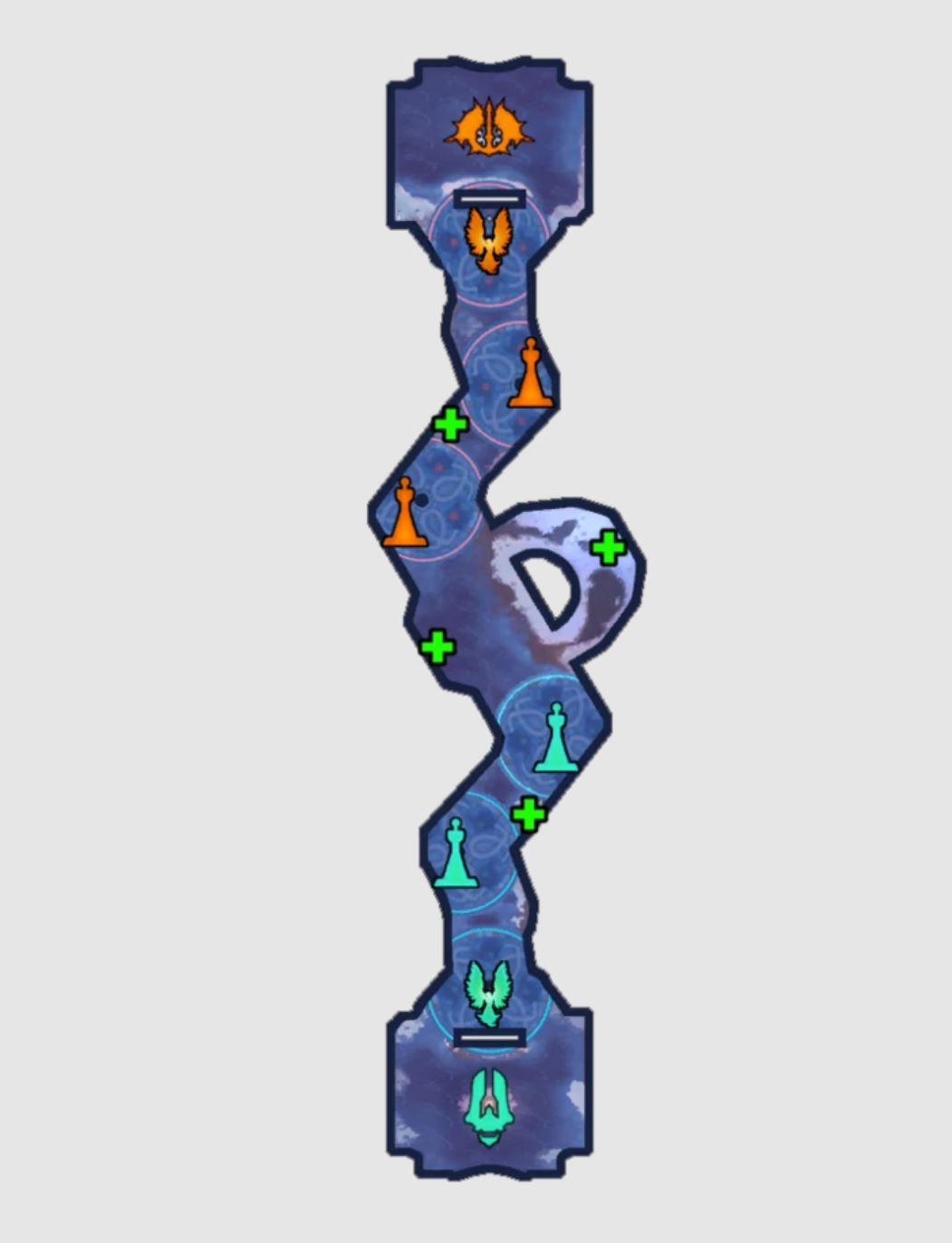
Assault is your “all random all mid” (ARAM) game mode and is truly quite hectic. It is the simplest game mode in SMITE, so let me just give you the main points here:
- It is a single-lane map.
- Each team has two towers, one phoenix and one Titan.
- There are no jungle camps.
- You cannot return to your fountain to regenerate health and mana or spend your gold (the only way to buy items and access the gold shop is to die). So, be sure to pick up some health and mana potions in the beginning. They’ll allow you to survive a little longer and soak up more experience before your first death.
- Healing orbs spawn at fixed points across the map. It is important to note that they don’t only heal the player that picks them up; they also heal those around them too. With that in mind, be sure to be aware of your teammates’ health and try to group up before picking up a healing orb for maximum value.
I must say that you can randomly get any god in the game here. Coming from League of Legends, I thought the only gods I could randomly get were those I owned. Still, I was very wrong, and I’m glad I was, as it afforded me multiple opportunities to try out gods that I never would’ve originally imagined.
Rotating Game Mode
There is always another special (and often ridiculous) game mode that you can play outside of the aforementioned standard game modes.
An example of one of these is “Grab Bag 2.0,” which is played on the Conquest map but gives all gods 40% cooldown reduction to start with and a maximum cooldown reduction limit of 80% (it’s usually 40%). It also starts players out with 100,000 gold, allowing you to buy all your gear, potions, and wards at the very start of the match.
As you can probably imagine, it gets pretty chaotic, but that’s the entire point of these rotating game modes, as they give us the option to get wild as they change up the rules. I can wholeheartedly say there’s nothing better than being able to cast my abilities every couple of seconds.
It truly makes me feel like an authentic spell-slinger. So, if you’re looking for an even more laid-back way to play the game (but no less exciting), definitely give these game modes a try.
Custom and Co-op Game Modes
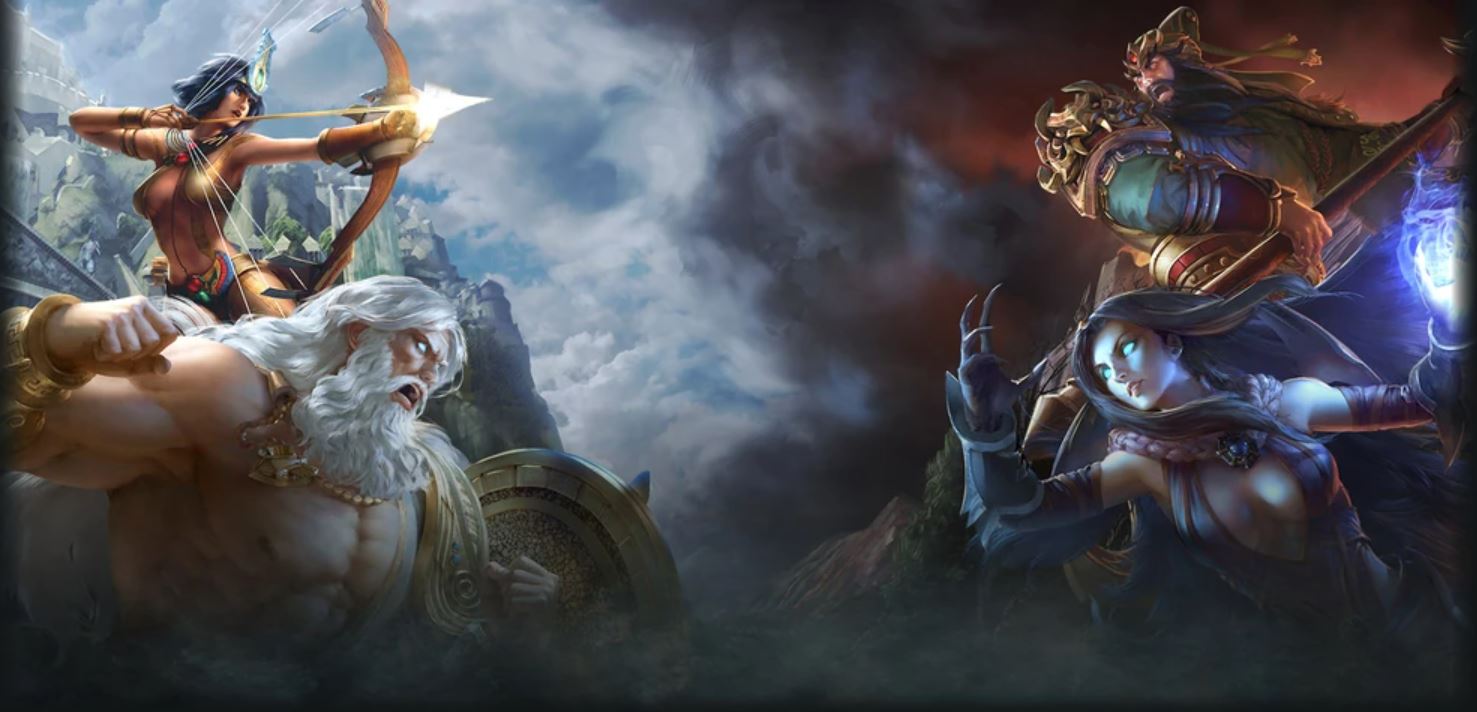
Of course, if you want to practice certain gods or maps, SMITE has custom and co-op game modes available for you to play against and/or with your friends or bots (computer-controlled gods). These bots have easy, medium, and hard settings, so set them according to the level of difficulty you want to practice against.
Items and Relics
Each god has six gear slots, two relic slots, and two consumable slots, all of which are bought in the in-game shop (relics are free, though).
- Gear slots are pretty straightforward, as you can only buy six pieces of gear from the gold shop. Every god has an “optimal build,” however, feel free to play around with all the gear available to you (or simply use the auto-buy feature). And if you’re coming to SMITE from another MOBA, just know that there are no boots. Shocking, I know.
- Relics have unique abilities with long cooldowns. At the start of the game, you can only have one relic, as the other relic slot is filled by an award that you can place for vision. Once you hit level 12 in your game, the second relic slot unlocks, allowing you to get rid of the ward and buy your final relic (you can still buy wards, as they are stored in your consumable slots).
- Consumables are items that are consumed upon usage. There are a decent number of potions and wards in SMITE that fall under this category, but they are neglected by many players (especially wards), so try not to forget to pick them up when you’ve got the gold to spare!
Battle Passes, Crossover Events, and Cosmetics
SMITE is by no means original with its battle pass system, as many games nowadays have one. However, SMITE’s battle passes are a great way to earn free rewards and are often the way Hi-Rez Studios facilitates their crossovers with other intellectual properties (IPs), such as Avatar the Last Airbender, Teenage Mutant Ninja Turtles, and Transformers.
In these crossovers, a select few gods (usually four) are given (optional) new appearances called skins. I’m a huge fan of Avatar the Last Airbender, so as an example, I’m going to put the trailer for its event below:
SMITE continues to have these awesome crossover events through their battle passes, so keep an eye out for them!
Tips for Players New to MOBAs
- Stepping into the range of a tower, phoenix, or Titan without minions will cause you to get hit by them. Make no mistake, structure damage hurts, especially in the early game. So, make sure you have a wave of minions with you before stepping into a structure’s range.
- Attacking an enemy god while in the range of a structure will cause you to be targeted by said structure.
- Attacking an enemy god will cause all nearby enemy minions to target you. Early game, minions do quite a bit of damage, so pick your battles wisely.
- Start with Arena. Stick with this game mode until you think you have a good handle on a couple of gods you enjoy playing, then move on to Joust and Slash to get a feel for the lanes and more organized team fighting. Save Conquest for last.
Tips for Players Experienced with MOBAs (but also new players)
- As already mentioned, there is no top and bottom lane; in SMITE, it is right and left.
- SMITE is played from a third-person perspective. Personally, this didn’t take me too long to get adjusted to. Honestly, I prefer the third-person perspective to the top-down one anyway.
- Auto-attacks are skill shots, not point-and-click. This will be a heavy adjustment, especially if you’re an ADC main.
- If you don’t last-hit minions, you will get some gold and experience, but last-hitting them will net you 50% more gold.
- In Conquest, every role is assigned a buff, so if you’re a Mid Laner, the red buff is yours. Don’t take the mana buff away from your Solo Laner unless they give you permission.
Overall Tips
- Watch professional games or streamers. You can learn a lot from their commentary or simply by pointing out what you think they did wrong by yourself. The more exposure to the game, the better. I personally always keep “https://www.twitch.tv/smitegame” up for the variety of casual streamers and professional play.
- Don’t jump into any game blind. Read up, especially if you’re trying out a god for the first time.
- Pick one or two gods (preferably of the same class) that you vibe with and stick with them. There is a lot to learn in SMITE, even as a MOBA veteran. Doing this can help you focus on the other aspects of the game once playing your favorite god(s) becomes second nature.
- When you decide to dabble in Conquest, pick one role and learn it well for the same reason as the latter tip.
FAQs
Question: Is SMITE hard to play?
Answer: If you’re new to the MOBA genre in general, there will certainly be a learning curve. It’s no easy feat to learn all the gods and their abilities, all the items and what they do, and how the game actually works. That said, if you’re someone who has experience with the MOBA genre, then picking up SMITE shouldn’t be all that difficult. Other than learning the gods and the items, the format of the game itself should be easy to pick up. The most glaring things that might be tough to get used to though are the third-person perspective and the fact that auto-attacks are skill-shots.
Question: Is SMITE beginner-friendly?
Answer: Yes, especially when considering the auto-skill and auto-buy features. However, while I would not, by any means, recommend a new player jump straight into the Conquest game mode, I would say that SMITE is easier to pick up than other MOBAs as a result of its other game modes, for they can ease you into the many aspects of the game.
Arena is an excellent way to just learn how to play your god(s) of choice and how to team fight without having to worry about much else. This is a wonderful game mode to start with. Joust and Slash are perfect game modes to move on to afterward before stepping into the deadly clutches of Conquest, as they add the elements of lanes and jungle camps without adding the additional factor of specific roles (i.e., Solo Lane, Mid Lane, etc.) necessary to Conquest.
Question: Is SMITE pay to win?
Answer: Definitely not. The currency that you use to buy gods (Favor) is abundantly available. You’re also given 10 gods for free (Ares, Artemis, Bellona, Guan Yu, Kukulkan, Neith, Nemesis, Ra, Thor, and Ymir), which puts you in a great starting position.
Finally, the gem currency, primarily used for buying cosmetics (skins, emotes, etc.), can be earned without paying money and simply by logging into the game (you get 15 gems for every 6th day logging in and 35 gems for every 7th day).
SMITE Overview: Conclusion
If you enjoy mythologies of any kind (and gaming), I would recommend trying this game out, even if you’ve never played a MOBA-style game before.
Granted, it’s not a game you’ll be able to pick up overnight, but the investment into understanding how it works is worth it. The gameplay is fluid and flashy. While not completely bereft of toxicity, the community has a relatively low level of it compared to other games.
With its many game modes, SMITE is excellent for both casuals who just want to play normal games and have some fun, and competitive players, who want to climb the ranks (the esports scene for this game is quite healthy).
The game is constantly being updated and patched, and new gods are added at a steady rate, so there’s no shortage of content. But in the end, there’s nothing better than inhabiting a literal god, so what are you waiting for?
